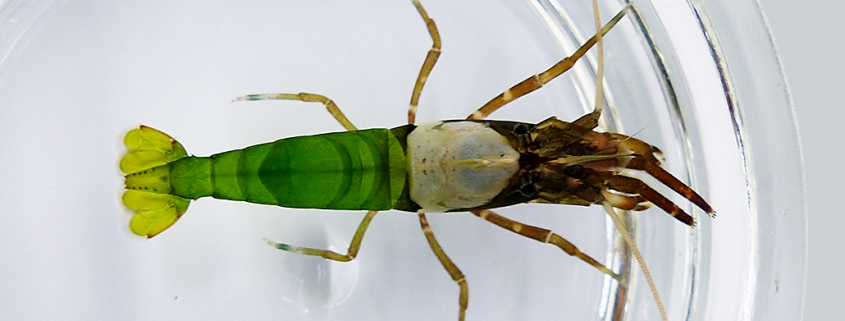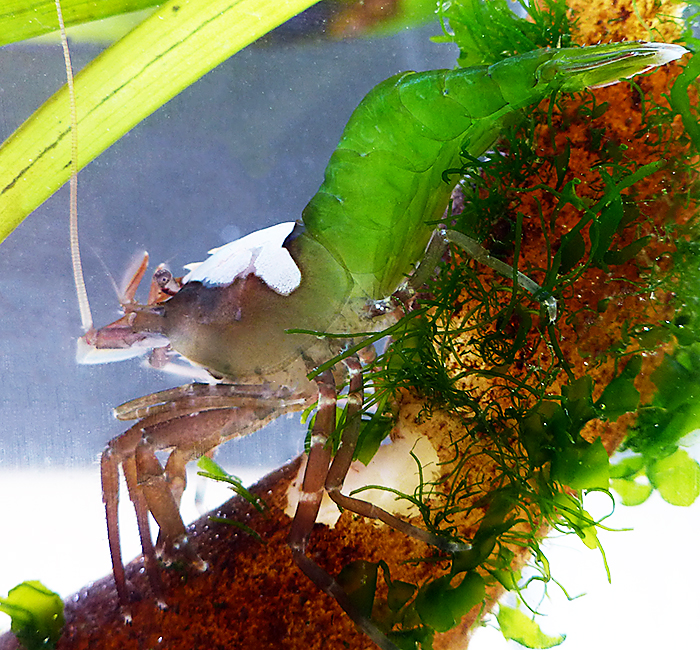Taylor Coastal Shrimp
Author: Rubin Johnston
Scientific Name: Heptacarpus taylori
Size Range: The average length of adults is around 28mm (1.1 in)
Identifying Features: Taylor Coastal Shrimp have a variety of colours, including red, brown, black, and green. Two things that make this species stand out are the arched back, and the distinct white patches on the top of its head and body. These patches may appear as separate patches or as a single large white patch similar to the one shown in the photos.
This species is commonly found near the shore, often in tidepools. They are omnivorous and will eat plants, plankton, and scavenge on dead animals. They are near the bottom of the food chain, so they have many predators, like crabs, sea urchins, starfish, and seabirds. Similar to other shrimp, during reproduction the male transfers a packet of sperm called a spermatophore to a pouch on the female’s abdomen. The female will produce eggs that she keeps in the same pouch until hatching. When the eggs hatch, the larvae over multiple weeks drift along in the current as nauplius and then metamorphose into zoea. The zoea larvae then develop into juvenile shrimp which can swim to food and usually end up by the shore, where they live and mate as adults.
REFERENCES:
Jensen, G. C. (2014). Genus Heptacarpus. In Crabs and shrimps of the Pacific Coast: A guide to shallow-water decapods from southeastern Alaska to the Mexican border (pp. 132–133). essay, MolaMarine.






Leave a Reply
Want to join the discussion?Feel free to contribute!